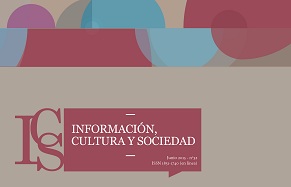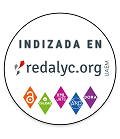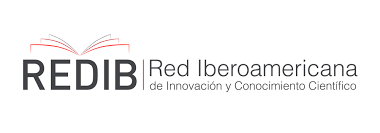The National University of Engineering (UNI) through its patents and utility models. Production and network analysis
Abstract
The study makes visible the collaboration and production networks of patents and utility models of UNI registered in Espacenet until 2019. The Network Analysis (AR) is applied to measure the degree of collaboration of inventors and organizations, as well as the main lines of technological interest. 104 inventors were identified, the collaboration with 2 organizations and 65 lines of technological interest, observing a considerable increase in the registration of patents for the period 2014–2016, being 88% utility models (Z) and 12% invention patents (A ). Regarding the lines of technological interest, it is observed that what is related to water treatment is the most important. Finally, according to the findings, collaboration with other organizations and inventors outside the UNI should be strengthened.Downloads
References
CONCYTEC. 2006. Plan nacional estratégico de ciencia, tecnología e innovación para la competitividad y el desarrollo humano PNCTI 2006 - 2021. Lima: CONCYTEC.
CONCYTEC. 2014. Estrategia Nacional para el Desarrollo de la Ciencia, Tecnología e Innovación. Crear para crecer. Lima: CONCYTEC.
Dima, Alina M. y Simona Vasilache.2015. Social network analysis for tacit knowledge management in universities. En Journal of Knowledge Economy. Vol. 6, no. 4, 856-864.
Ling, JR. 2009. Social network analysis: Theory, method and application. Beijing: Normal University Press.
Liu, J. 2004. An introduction to school network analysis. Beijing: Social Science Documentation Publishing House.
Ma, Shao-Qi, Can Jiao y Min-Qiang Zhang. 2011. Application of social network analysis in psychology.En Advances in Psychological Science. Vol. 19, no. 5, 755-764 <http://journal.psych.ac.cn/xlkxjz/EN/Y2011/V19/I5/755>[Consulta: 29 diciembre 2019].
Martínez de Ita, María Eugenia, Fernando Julio Piñero y Silvana Andrea Figueroa Delgado. 2013. El papel de la universidad en el desarrollo. Puebla: Benemérita Universidad Autónoma de Puebla; Clacso; Universidad Nacional del Centro de la Provincia de Buenos Aires.<http://biblioteca.clacso.edu.ar/clacso/se/20140211121020/universidad.pdf>[Consulta: 29 diciembre 2019].
Ministerio de Educación. 2014. Ley Universitaria. Ley N° 30220. Lima: Ministerio de Educación.
Molina, José Luis. 2009. Panorama de la investigación en redes sociales. En REDES Revista hispana para el análisis de redes sociales. Vol. 17, no. 11, 235-256.<https://revistes.uab.cat/redes/article/view/v17-n2-molina/383-pdf-es>[Consulta: 29 diciembre 2019].
Morescalchi, Andrea, Fabio Pammolli, Orion Penner, Alexander M. Petersen y Massimo Riccaboni. 2015. The evolution of networks of innovators within andacross borders: evidence from patent data. En Research Policy. Vol. 44, no. 3,651-668. <https://doi.org/10.1016/j.respol.2014.10.015>
OECD. 2018The future of education and skills education 2030. Paris: OECD. <https://www.oecd.org/education/2030-project/>
OMPI. 2007. Manual de la OMPI de redacción de solicitudes de patente. Ginebra: OMPI. <https://www.wipo.int/publications/es/details.jsp?id=297> [Consulta: 29 diciembre 2019].
Osca-Lluch, Julia. 2010. Aplicación del análisis de redes al estudio de la investigación española de historia de la ciencia. En REDES - Revista hispana para el análisis de redes sociales. Vol. 19, no. 2, 122-143. <https://doi.org/10.5565/rev/redes.402>
Paul, Louis C. y Anthony O'Lenick Jr. 2008. Patent. Peace of mind. New York: Allured Publishing Corporation.
Rodríguez Ponce, Emilio. 2009. El rol de las universidades en la Sociedad del Conocimiento y en la era de la globalización: evidencia desde Chile. En Interciencia. Vol. 34, no. 11, 824-829. <http://ve.scielo.org/scielo.php?script=sci_arttext&pid=S0378-18442009001100013> [Consulta: 29 diciembre 2019].
Russell, Jane M., Ma. Jesús Madera Jaramillo y Shirley Ainsworth. 2009. El análisis de redes en el estudio de la colaboración científica. En REDES- Revista hispana para el análisis de redes sociales. Vol. 17, no. 2, 38-47. <https://doi.org/10.5565/rev/redes.374>
Stoddart, S. D. R. y Siddiqui, M. K. 2013. Social network analysis of authorship networks and the identification of expert advisors. En Value in Health.Vol. 16, no. 7, 614-614. <https://doi.org/10.1016/j.jval.2013.08.1777>
SUNEDU. 2018. Informe bienal sobre la realidad universitaria peruana. Lima: SUNEDU. <https://www.sunedu.gob.pe/informe-bienal-sobre-realidad-universitaria/> [Consulta: 29 diciembre 2019].
UNESCO. 2015. Rethinking Education, Towards a global common good? Paris: UNESCO. <https://unesdoc.unesco.org/ark:/48223/pf0000232555> [Consulta: 29 diciembre 2019].
UNESCO. 2018. Global education monitoring report 2019. Migration, displacement and education. Building bridges, not walls. Bruselas: UNESCO. <https://unesdoc.unesco.org/ark:/48223/pf0000265866> [Consulta: 29 diciembre 2019].
Valente, Thomas W. 1995. Network models of the diffusion of innovations. New Jersey: Hampton Press.
Villarán de la Puente, Fernando. 2015. Historia de las patentes e invenciones en el Perú. Lima: INDECOPI.
Authors publishing in this journal acknowledge the conditions below:
- Authors retain the copyright of their work while they transfer the right of the first publishing to the journal, under the Creative Commons Attribution-ShareAlike 4.0 International (CC BY-SA 4.0) Licence, which allows third parties to reproduce them under the condition that express mention is given to the author and to its original publication in the journal.
- Authors may enter into other contractual and independent arrangements for the non-exclusive distribution of the version of the article published in this journal (for instance, it can be published in an institutional repository or in a book). In any case, an express mention should be given to its first publication in the journal.
- It is permitted and encouraged to publish online the articles (for example, on institutional or personal pages).


























